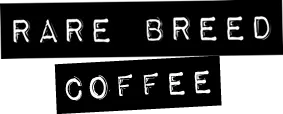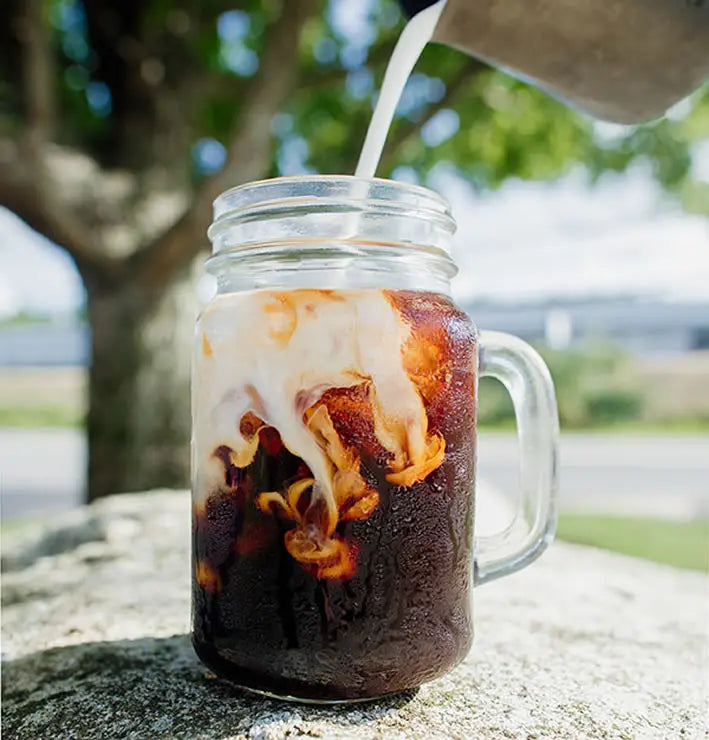Cold brew coffee has been gaining traction throughout the coffee industry over the past few years. It’s famous for its smooth, rich, non-acidic flavor. Select cafes across the country are now serving it on a nitrogen tap, as a Guinness beer would be served. We get a lot of inquiries about cold brew here at the café. People wonder what it is, if we have it, and how to make it at home. Here, I hope to answer some of those questions for you!
The science behind cold brew
Cold brewed coffee is extracted from roasted coffee beans in room temperature water. When brewing coffee, you have control over a couple variables that will dictate the aroma, taste, body, and finish of your cup. You need to look at factors like dose, time, and temperature. You can manipulate the amount of dissolved solids in your cup by adjusting the temperature of the water used for extraction, and the amount of time that coffee grounds interact with that water.
Let’s clarify. Heat and water break down and extract the soluble compounds in a coffee bean. Water causes large organic acids to undergo a process called “hydrolysis,” which splits them up into smaller acids, imparting delicate flavors to your brew. Heat makes this whole thing happen faster.
Now, what if you don’t use hot water? You can still hydrolyze and dissolve most coffee solids into room temperature water. It just takes a much longer time. Instead of brewing a cup of coffee in under four minutes, the grounds need to soak in water for 18-20 hours. Even at that longer steep time, not all of the coffee compounds are going to break down. Many of the light acidic notes never get released. This is why the cup is so smooth. Critics would say cold brew coffee lacks some of the light, acidic complexity of hot brews. It all comes down to a matter of preference.
When you grind coffee, the surface area of each particle is important because this affects the coffee extraction rate. If you have a very small particle size, you will increase the amount extraction that takes place in a shorter amount of time, as with espresso. If you increase time, and have small coffee grounds, with large exposed surface area, you could potentially over-extract from your coffee beans and get some really bitter tastes in your cup. Espresso is the fastest brew method, and thus the coffee is ground the finest. When you cold brew, you are extracting for a very long time, so your particle size should be large. When cold brewing, you use a lot more coffee grounds than you would brewing with hot water. This is because you are not going to break down as many of the compounds in the beans, so to achieve the same body as a hot brew, you simply need more coffee.
Enjoy the art of cold brew at home
First of all, you need to start with good coffee (we can help you there). The coffee needs to be ground to a fairly large particle size. You want it right around where you would grind it for a French press. You add the correct dose of grounds for your amount of water, and make sure all the grounds are wet. For cold brew concentrate, we use a 1:5 ratio coffee to water. Alternate between the coffee grounds and water. Do a light stir in between, but don't agitate too much. The coffee grounds and water sit for 18-20 hours, depending on your preference. After the coffee steeps, you strain the grounds and residue out of the water and you are left with a coffee concentrate. You now add water to the concentrate to your desire, pour it over ice, and enjoy!
There are some products on the market that make this process a little easier. Toddy is a well-known brand for cold brewers. Since their home brewer is a standard size, they provide very specific brewing instructions. We really like the filter that comes with the home toddy system. It filters out enough of the residue that you are left with a very smooth cup. You can also use a French press, but you will have a little more residue from the grounds left in your end product.
What is nitro cold brew?
To make our nitro cold brew, we take our cold brewed coffee, put it in a keg, and pump nitrogen gas into it. We then then serve it over gas from a nitrogen tap. This gives the coffee a thick, Guinness-like texture. Nitrogen gas bubbles are smaller than the carbon dioxide gas bubbles. Therefore, they dissolve into liquid a more finely and stay there a little longer.

